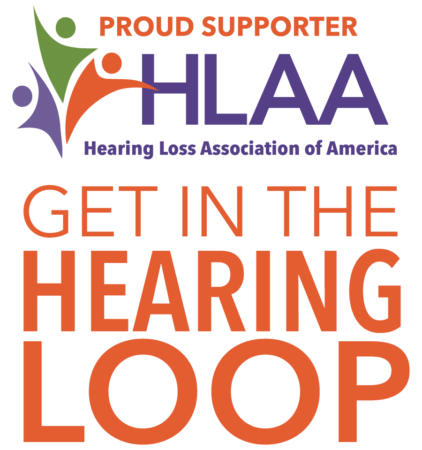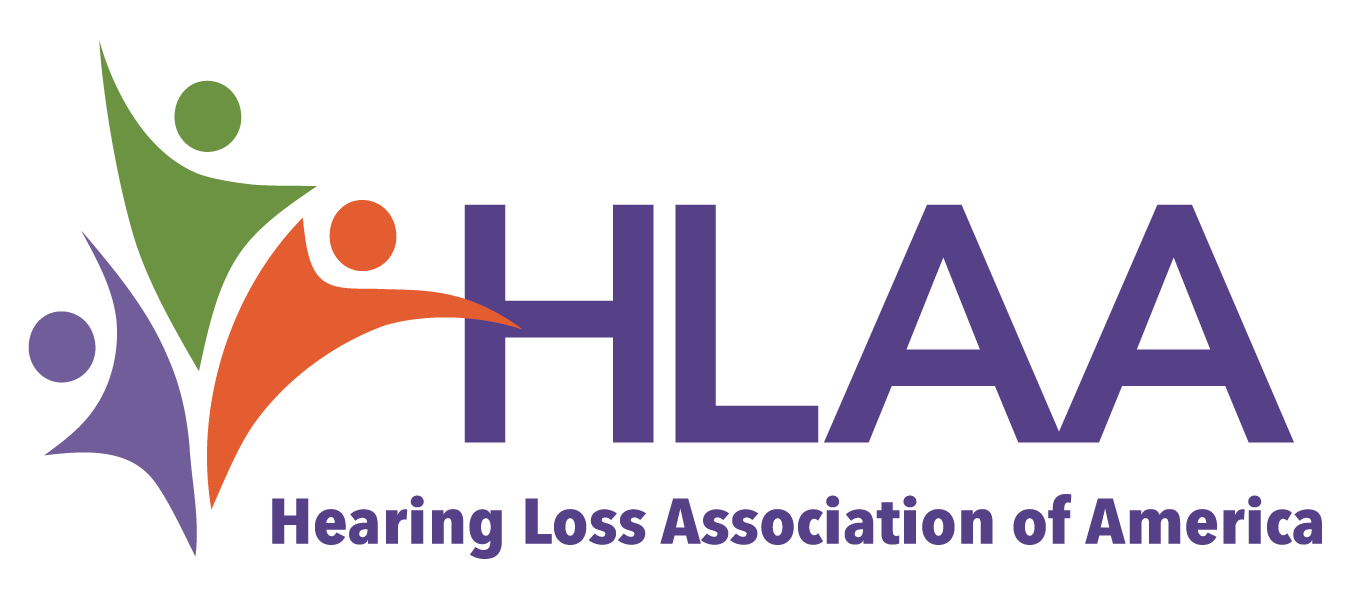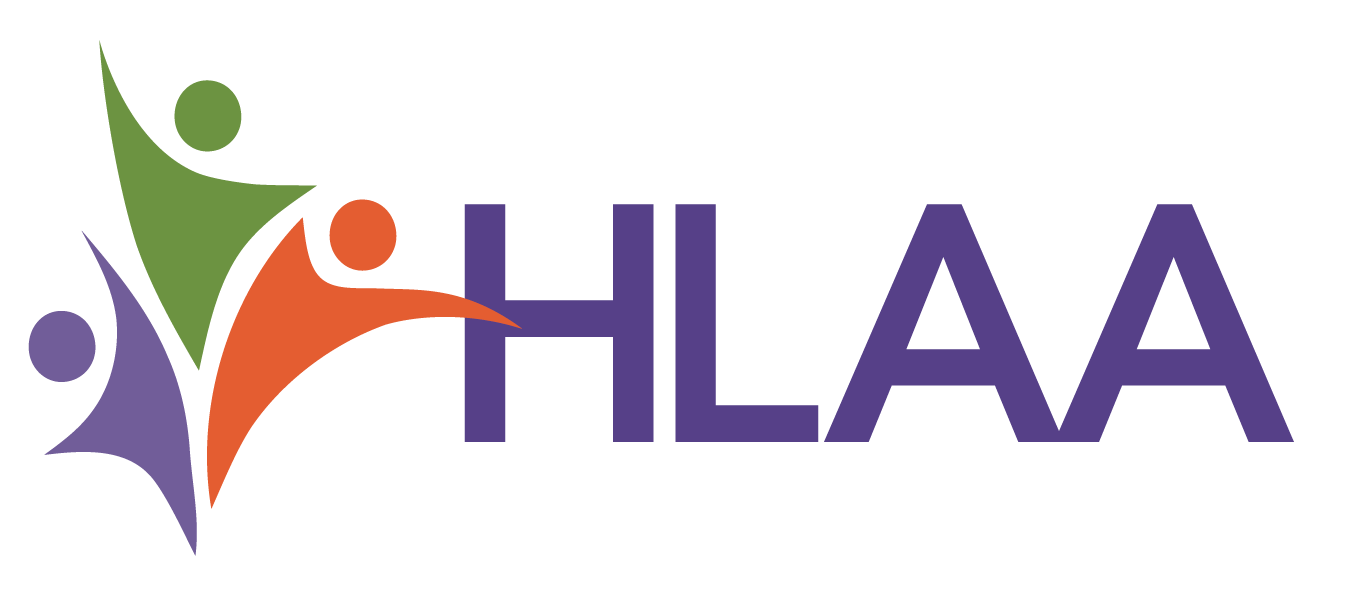
Get in the Hearing Loop is a communication access program of HLAA.
We dream of a world where people with hearing loss can thrive each day with communication access, full inclusion, and equal participation in all aspects of life, everywhere they go. Through education, advocacy, and consultation services, the Get in the Hearing Loop Committee has laid the groundwork for a national movement of loop enthusiasts who are promoting communication access and ADA compliance, one loop at a time. We hope to change public spaces—and lives!—by sharing information about hearing loops.
If you are a…
- person with hearing loss
- hearing loss advocate
- venue that’s interested in providing the best assistive listening experience
- hearing loop installer or AV tech
- person or foundation committed to developing hearing-inclusive communities
You’ve come to the right place! We’re building hearing-friendly communities, and we invite you to join us.
GITHL Toolkit
Online resources that offer free downloadable tools to help you or your chapter advocate for hearing loops.
Download
ADVOCACY
GUIDE TOOLKIT HANDBOOK
PART 1 TOOLKIT HANDBOOK
PART 2 TOOLKIT
CHECKLIST
Understanding life with hearing loss
People with hearing loss worry and plan how they’ll communicate every day, in every situation. And often, hearing aids or cochlear implants are not enough. For example:
Imagine not being able to understand…
-
- instructions given by a doctor or pharmacist
- announcements in airports, train stations, or on public transportation
- your family on the telephone
- dialogue in a movie, play, or lecture
- companions at a restaurant
- work related meetings
- your teacher, professor or classmates
Now, imagine a technology that addresses these common challenges
Hearing loops bring sound directly into a listeners’ telecoil-enabled hearing aids or cochlear implant— improving clarity and understanding.
Hearing loops provide…
-
-
- Easy, immediate and discreet communication access for people with hearing loss
- An easy, low-maintenance way for venues to provide communication access technology
- Hearing access that’s hearing aid compatible and universal
- A way for venues to comply with the Americans with Disabilities Act (ADA) and state laws for communication access
- Thriving, inclusive, and hearing-friendly communities for everyone
-
For more information about hearing loops, including user and venue benefits, how loops work, and how to choose a loop installer, visit the Hearing Loop Technology page.
Our Work
Many people are not yet aware of hearing loops or other technologies that can improve public engagement and enrich the lives of millions. Communication access enhances engagement for people with hearing loss, their family, friends and colleagues, and communities at large. The Get in the Hearing Loop program is changing that…one loop, one advocate, one ADA request at a time.
Get in the Hearing Loop is dedicated to providing and promoting community education, advocacy on behalf of people of hearing loss, and consultation services to help venues of all kinds successfully implement hearing loop technology.
Get in the Hearing Loop…
- educates city council members and community leaders about the need for hearing loops
- provides information to places of worship, audiologists, venues and organizations of all shapes and sizes about hearing loops and hearing loss
- advocates for city and state laws that improve the lives of people with hearing loss
- provides workshops, toolkits, videos, articles, and more to inspire and guide anyone interested in communication access: event planners, installers, venue managers, decision-makers, civic leaders, AV techs, advocates, funders, and of course, people with hearing loss
- requests communication access via hearing loops at a wide variety of venues
- consults closely with installers to ensure loop installations meet universal IEC standards
Each hearing loop becomes part of our nation’s accessibility infrastructure, creating hearing-friendly communities. Loops include people with hearing loss much the way wheelchair ramps include people with mobility challenges. We envision a world where hearing loops and communication access are an automatic, enduring part of our daily lives.
Our Background
Get in the Hearing Loop began as a grass-roots campaign, a collaboration between HLAA and the American Academy of Audiology. With workshops at HLAA and AAA conventions, and presentations to civic and professional groups around the country, we laid the groundwork for a national movement of loop enthusiasts who are promoting communication access and ADA compliance, one loop at a time.
Today, we’re a nationwide advocacy program led by HLAA. An expert national volunteer task force meets regularly to shape our efforts and execute strategies, audiologist and hearing loop advocate Juliette Sterkens provides professional advice and outreach, and the David & Carol Myers Foundation has generously helped fund our work.
Today, loops can be found throughout the United States, but advocacy continues to push for more loops as a way of creating more hearing-friendly communities.
I’m interested in loops. Where do I start?
Here are some easy next steps and resources to learn more.
- Check out the Hearing Loop Technology page for more information and a live video example of hearing loop sound quality in a New York City Subway information kiosk.
- Read America is Getting in the Hearing Loop, a recent article in Hearing Life providing insight into the national looping movement.
- Get answers to frequently asked questions on the Hearing Assistive Technology page and at HearingLoop FAQs.
- Before purchasing a hearing Loop or contracting with an installer, review the pointers in these guides:How to Purchase a Loop for Your VenueHearing Loop Systems: A Guide to Best Practice for Service Providers, provided by the International Hearing Loop Manufacturers Association (IHLMA)
Specifically, for people with hearing loss:
- Use our accommodations request guidelines to send an email or letter, to request communication access:
Guide to Requesting Hearing Accommodation in a Public Venue Guide to Requesting Hearing Accommodation in the Workplace published by the Job Accommodation Network (JAN) - Use this convenient form to talk with your hearing health provider about telecoils, an essential component for using assistive listening technologies like hearing loops, Asking Your Audiologist about Telecoils. Also see the Purchasing a Hearing Aid: A Consumer Checklist.
Making it Happen in Your Community
The need for readily available assistive listening systems and devices in day-to-day living for people with hearing loss is one of the driving forces behind the Get in the Hearing Loop campaign.
Listening devices that connect easily and unobtrusively are most likely to be used. Hearing loop systems accomplish this goal. If you would like to help encourage the installation and use of more hearing loop systems here are some guidelines:
Getting Started
- Understand the facts. You recognize the need for more hearing loops in the community. However, people who have never come across hearing loops before will have no idea why you would want to spend money on an invisible solution to an invisible problem. You need to be able to talk to people about the benefits and limitations of hearing loop systems. Develop a basic understanding about how hearing loop systems and telecoils work. Do your research to become familiar with this technology: in addition to this Get in the Hearing Loop page, see also the Hearing Loop Technology page and HearingLoop.org.
- Become familiar with the Americans with Disabilities Act (ADA) by visiting ada.gov and become knowledgeable about the regulations and requirements for assistive listening systems in various public facilities.
- Know the alternatives to loop systems and be able to explain why the loop would be best for a particular place. See the Hearing Assistive Technology page.
Building Momentum
- Create a coalition. It’s possible for one person to make change happen, but it’s more effective to engage and mobilize people to help you achieve your goals. Find groups to champion the project locally:
- Get in the Hearing Loop campaign members – HLAA chapters as well as Sertoma and Lions Clubs have national and local programs supporting hearing loss initiatives
- Representatives from the Office of Deaf and Hard of Hearing Services in your state
- Representatives of other organizations of and for people with hearing loss
- Hearing health care providers and audiologists
- Nonprofit organizations working with people with hearing loss
- Electrical engineers or other technology advisors
- Kiwanis, Rotary, Business and Professional Women’s Foundation and other civic groups
- Work with professionals. Find and work with hearing loop installers, or audio visual professionals trained in hearing loop installation, in your area who have a solid reputation and who adhere to the international standard for loop installation. While consumers can advocate for access, when it’s time to install a loop system, you will need to be able to turn to reputable installers who can talk about such details as cost and time to install a loop system. If you cannot locate a firm with hearing loop expertise, contact the hearing loop distributors to find if there are reputable installers in your area.
- Reach out to the community. Strategize a campaign with highly visible projects in the community where public venues are required to provide hearing accommodation. A good place to start is city and state government offices and meeting rooms, libraries, community and senior centers, public auditoriums, theaters, and places of worship—particularly if you know a member of a congregation who is struggling to understand services.
- Prepare an elevator speech. Create and practice a 30- to 60-second introduction to hearing loops that captures the value, impact and cost benefits of hearing loop installations. You will be most successful convincing others to install loops if you have marshalled the facts and can present them in a concise, coherent manner.
- Include human interest stories. Knowing how many people are impacted is one thing; making it concrete with personal stories will ensure your audience remembers it. We learned of an aunt in a nursing home whose eyes lit up when she finally heard through the loop; the father who didn’t get the jokes until he heard these through a loop; the grandmother who was able to hear her granddaughter’s wedding ceremony after a loop was installed in the sanctuary. If you know a real‐life example of success using a hearing loop, tell that story. Your story will likely hit home more readily than numbers alone can convey.
- Obtain Get in the Hearing Loop brochures, available from HLAA, to leave behind at meetings and distribute broadly within the community.
- More Campaign Tactics:
- Make presentations to civic organizations: Lions Clubs, Rotary, Kiwanis, church groups, or senior centers – use the Get in the Hearing Loop PowerPoint presentation, located on the HLAA website.
- Work with audiologists, hearing aid dispensers, doctors, and hospitals willing to loop their own waiting rooms.
- Write letters to local newspaper editors, Dear Abby, or Hints from Heloise.
- Cultivate media contacts and ask them to run human interest stories on a successful installation and the reaction of people with hearing loss who use the facility.
- Set up a website to publicize your efforts; use Facebook, Twitter and Blogs.
- Check with city/county officials about distributing brochures and information about the campaign at libraries, community and senior centers and at community events.
- Work with advisory boards for hearing aid dispensers and/or push for legislation to require the dispensing of hearing aids with telecoils.
- Once a venue is looped, you can turn to these people who use the loop for testimony to its effectiveness.
Celebrate Success!
- Make sure every member of your team, including the venue, gets credit for their contributions—both personally and publicly.
- Publicize events. Make the inauguration of a loop system a public event to garner more visibility.
- Build upon each installation. Success breeds success—use your success to promote hearing loops in more venues throughout your community.
Additional Resources
- Brochure, A Guide to Understanding Hearing Loops
- GITHL Toolkit, an online resource that offers free downloadable tools to help you or your chapter advocate for hearing loops.
- Hearing Loop Installation – For Your Home or Office
- Replay the webinar, Hearing Loops Don’t Just Happen, presented by HLAA Hearing Loop Advocate Juliëtte Sterkens, Au.D.
- Proud Supporter GITHL Logos available for download. Show your support for our GITHL Program and use the logos on your website, social media and print materials.

For more information contact us at GITHLinfo@hearingloss.org.

